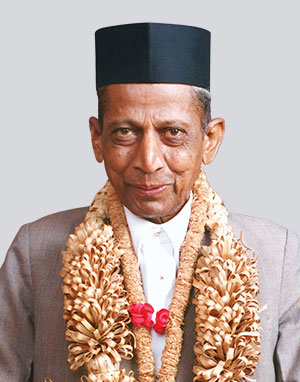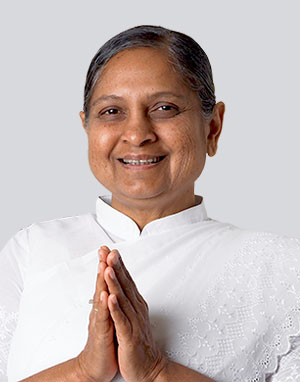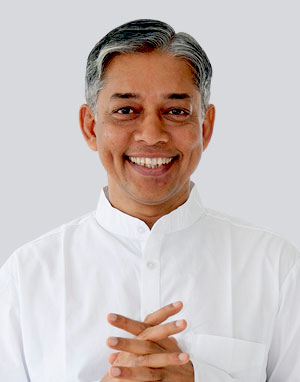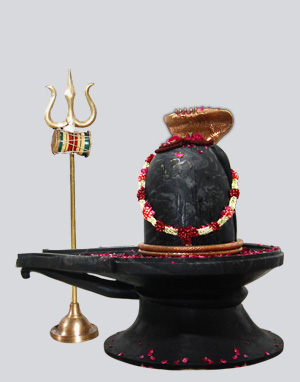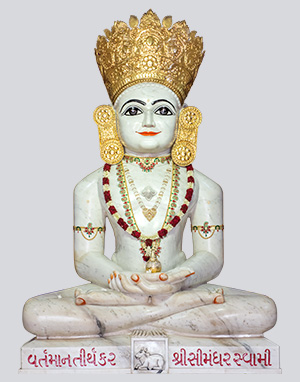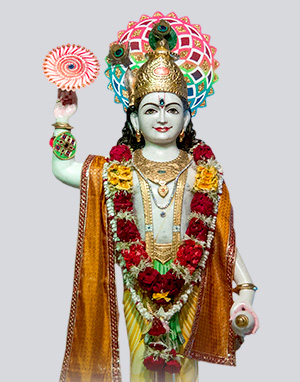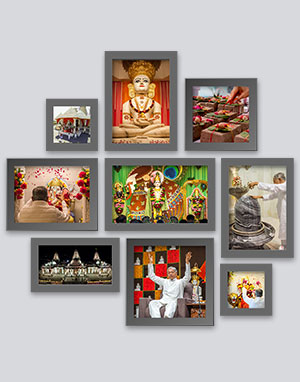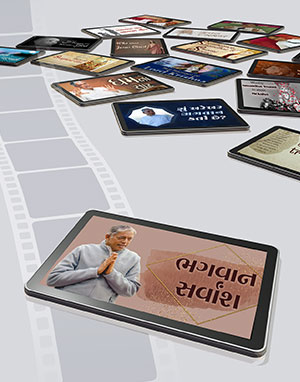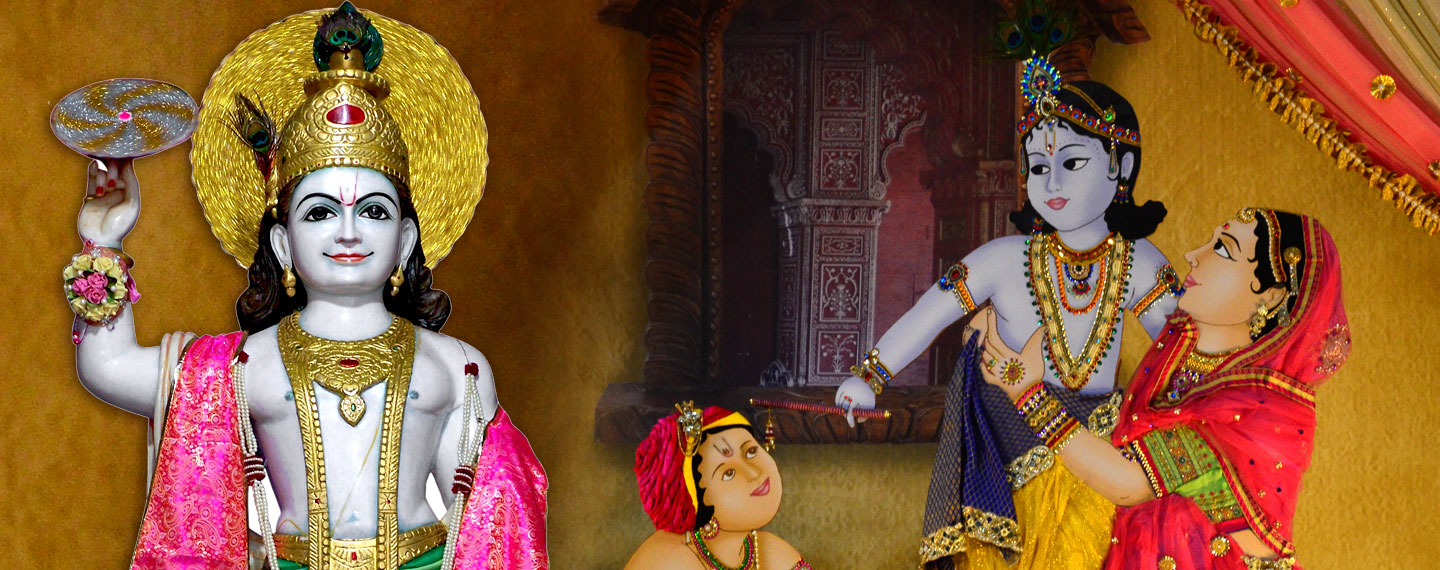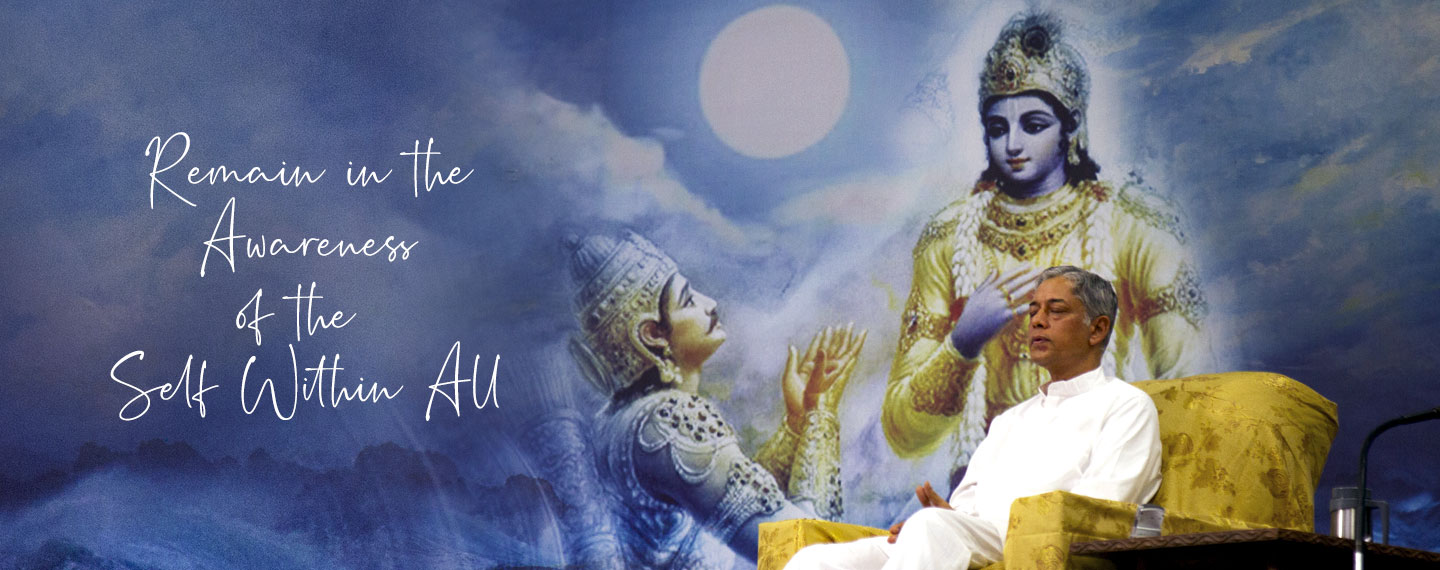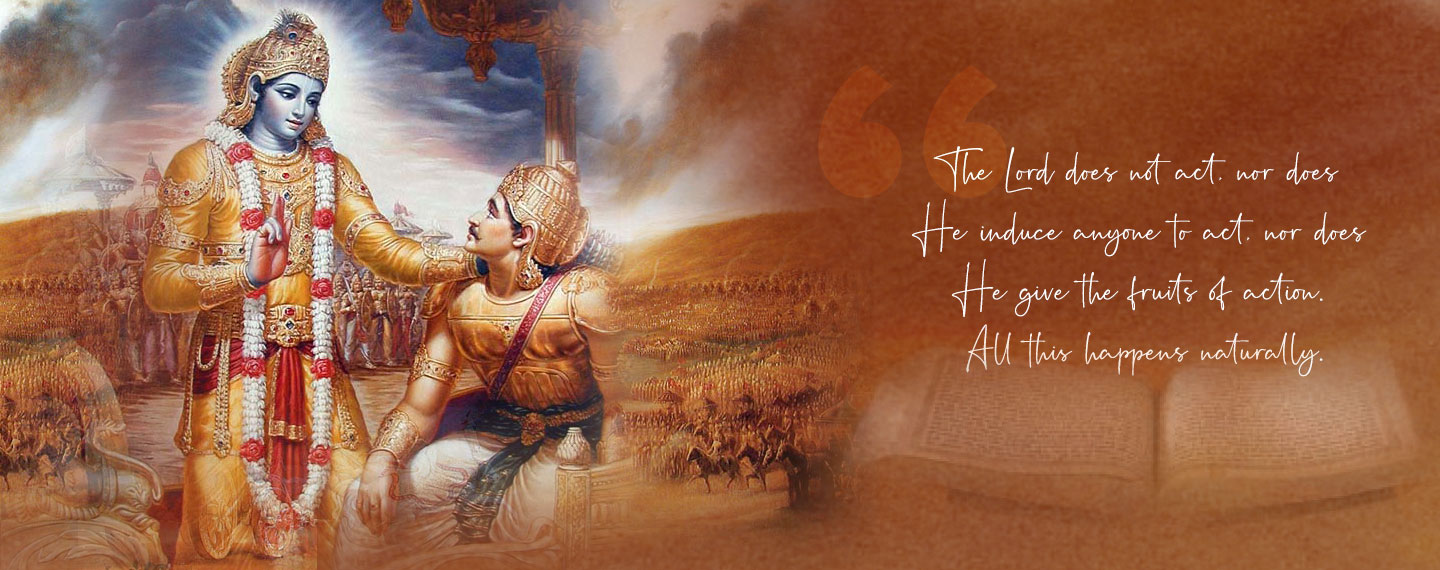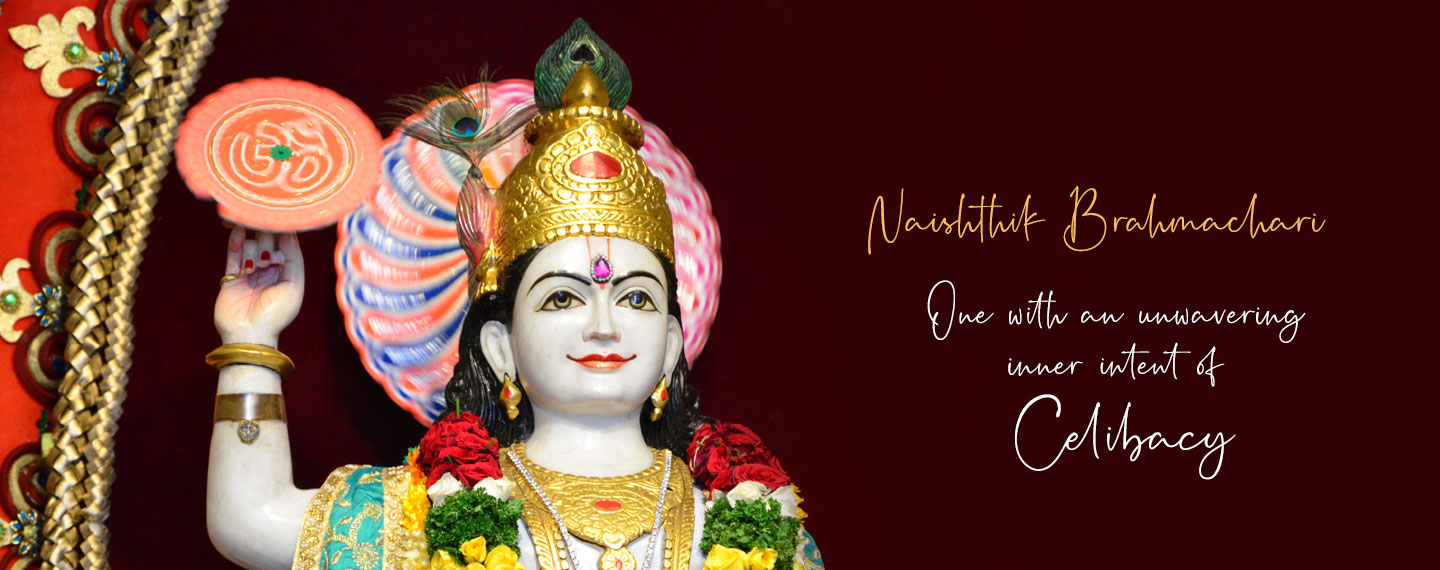Lord Krishna: Inspiring to Be Narayan (Soul) from Nara (Human) - The Essence of Bhagavad Gita
Lord Krishna or Shri Krishna is most often worshipped in the forms of:
- Bal Krishna (An infant)
- Gopala (A mischievous young boy)
- Vasudeva (A human-being evolved to the stage of God-hood)
- Yogeshwar (One who has realized the Ultimate Self)
Describing the different forms Lord Krishna is worshipped in, Param Pujya Dadashri said, “Some have labeled Him ‘The One with a flute’; some call Him ‘The One with Gopis.’ But Lord Krishna cannot be fully understood that way.”
Beyond the above-mentioned forms, Param Pujya Dadashri explained that Lord Krishna was a manifested God living in continuous awareness and an exalted Self-realized stage; He was a Vasudeva Narayan, a Yogeshwar, and one of the 63 Shalaka Purusha (one with super-human abilities and achievements).
The Essence of the Bhagavad Gita
As Arjun’s guide on the Mahabharata battlefield, it was Lord Krishna’s duty to address his (Arjun's) despondency. In order to do so, the Lord began by revealing His true, divine Self: "Arjun, you have known Me for a long time, yet you haven't known Me in the true sense. What you see before you is My physical body, not the true Self. I am separate from this body. I am Atma (the Self).”
“Material” and “Packing”
Param Pujya Dadashri elaborated that, “Lord Krishna said, ‘The ‘material’ within is precisely what I am - that actually is Krishna.’ You will find what you are searching for if you recognize Him (beyond the “packing” of the body). The entire inner intent of Shri Krishna is contained within these two words (material and packing).”
Using the subject of death to further illustrate this, Param Pujya Dadashri explained that what departs at the time of death is the inner “material” (Atma, or the Self), and what remains behind is the discarded “packing” of the body. While Lord Krishna’s “packing” was of Vasudeva Narayan, there are infinite varieties of packing for the living beings of the world – plant-forms, animal-forms, the human-form, etc.
Remain in the Awareness of the Self Within All
Guiding further, Lord Krishna enlightened Arjun with the knowledge of the Self existing within Him, and within all living beings – including those he (Arjun) must now face in battle.
"Just as I am Atma (the Self), you too are Atma. The brothers, uncles, teachers, and friends whom you are facing in the battle are also Atma.”
Shri Krishna continued, “Arjun, this battle is your karmic destiny, and you must carry it out with the awareness of the Atma within all. If you remain in this awareness and fight the war, you will not bind any new karma and your remaining karmas will exhaust. This will lead to ultimate salvation."
Who is the "I" in the Bhagavad Gita?
“In the ‘Gita’, it is said, ‘Whenever the Earth becomes heavily burdened with demerit karmas, I will take birth.’ Who is this ‘I’?”
Param Pujya Dadashri explained that, “That ‘I’ refers to the real Self. It is a principle that when there is an increase of demerit karmas on Earth, a Great Being will take birth. In this way, in every yuga (time cycle), a Great Being is born.”
“Na Kartutva, Na Karmani, Lokshya Shrujati Prabhu:
Na Karmaphal Sanyog, Svabhavas Tu Pravartate!”
“The Lord does not act, nor does He induce anyone to act, nor does He give the fruits of action. All this happens naturally.”
Param Pujya Dadashri elaborated that, “Shri Krishna said that the world has arisen naturally; it is all happening naturally. The world is running naturally, and it is being run by an energy called Vyavasthit Shakti (result of Scientific Circumstantial Evidences). Vyavasthit Shakti is not the creator of the world. Vyavasthit Shakti is natural and eternal.”
“Atma So Paramatma”
It is said that, “The real Self is the Absolute Self.” What does that mean? Is the real Self Lord Krishna?
Param Pujya Dadashri explained that, “When Shree Krishna says, ‘I am doing this, I am doing that,’ He is speaking as an embodiment of the Self. People have misunderstood this. People believed Him to be speaking as a mortal but, in actuality, He is speaking as an embodiment of the Self, the immortal.”
What is the Sudarshan Chakra?
Param Pujya Dadashri described that the Sudarshan Chakra (the circular spinning weapon depicted on Lord Krishna’s right index finger) represents the Lord’s Samyak Darshan (Self Realization, or the vision that “I am the Self”), which He had obtained from Tirthankara Lord Neminath.
What Does Naishthik Brahmachari Mean?
Param Pujya Dadashri explained that, even though Lord Krishna had more than 16,000 queens and lived a rich palatial life, He was actually a “Naishthik Brahmachari” (one with an unwavering inner intent of celibacy).
He further explained that, “(Naishthik Brahmachari) describes One in whom there is the constant inner intent, devotion, and sincerity towards celibacy. His discharging karma may be of non-celibacy, but His charging karma is of absolute, pure, and continuous celibacy.”
How is Brahma Sambandha Established?
Param Pujya Dadashri said, “Brahma Sambandha means to make a connection at the feet of the One within whom Brahma (the Omniscient Lord) has manifested.” Describing the sequence of how Brahma Sambandha is established, Param Pujya Dadashri said:
“A Gnani Purush removes your devotion to the world, places that devotion in Brahma (the Self), and makes you Brahmanishtha (established in the Self).
For countless lives, the Self and the non-self have been one through delusion. In the Gnan Vidhi ceremony, the Self and the non-self are separated according to their intrinsic properties. When a Gnani Purush destroys your demerit karmas, awareness of the Self takes hold. When one experiences the bliss of the Self, Brahma Sambandha is established.
When one does not forget the Lord Within even for an instant, that state is called Brahma Sambandha.”
Pardharma vs. Svadharma
Param Pujya Dadashri described, “Lord Krishna said, ‘Dharma (religion) of the Self is Svadharma, while activities such as fasting or penance are of the non-self - there is nothing of the Self in them.”
He continued, “Pardharma is the dharma of prakruti (the non-self complex), whereas Svadharma is the dharma of the Self. The Self is your Swaroop (natural Self-state).” Param Pujya Dadashri concluded by saying, “Svadharma can only be practiced when one understands and recognizes the Self within as Krishna. A Vaishnav is the one who recognizes Lord Krishna within.”
Worshipping Lord Krishna
When questioned about the different forms in which Shri Krishna may be worshipped, Param Pujya Dadashri recommended the worship of Bal Krishna statue to those who desire worldly benefit. To those desirous of moksha (liberation from the cycles of birth and death), He recommended worshipping the Self-knowledge expounded by Yogeshwara Krishna in the Bhagavad Gita.
Param Pujya Dadashri further explained that, “When a person devotes himself to a murti (idol), he remains the idol - the formed non-self complex; when a person devotes himself to the Amurta (formless), he attains the formless Self and becomes liberated. Shree Krishna said, ‘You actually are Lord Krishna (the Paramatma).’ But how will this be understood unless you have attained the knowledge of the Self?”
Param Pujya Dadashri concluded by saying, “You need the religion of Yogeshwar Krishna; it is a temple of Gnan (Self-knowledge). Lord Krishna was a Gnani (embodiment of Self-knowledge). He became enlightened. He became a Gnani Purush (Narayan) from an ordinary human being (nara).”
Additional Forms of Lord Krishna represented in the Trimandir, are:
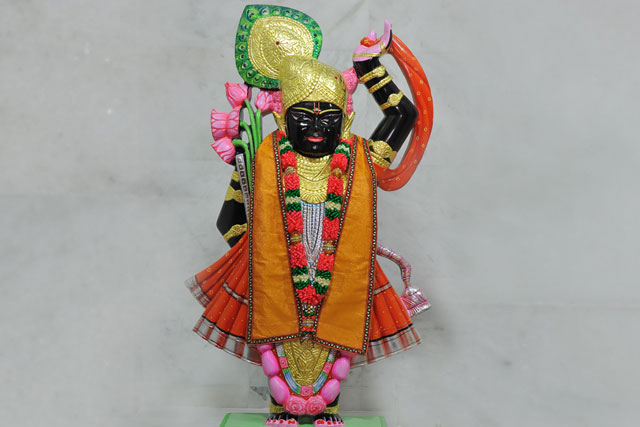 Lord Shrinathji
Lord Shrinathji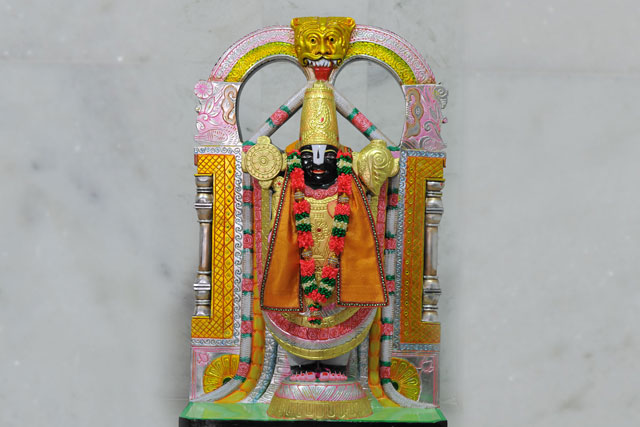 Lord Tirupati Balaji
Lord Tirupati BalajiAnnual Trimandir Celebrations
Festivals that are celebrated annually in the Trimandir are:
- Lord Krishna’s Janmasthami (birthday) is celebrated with a special bhakti (devotional worship) program.
- New Year’s Day following Diwali is celebrated with Annakut (food-banquet offering).








